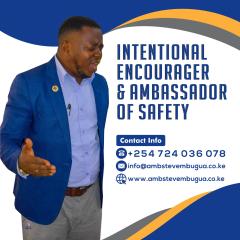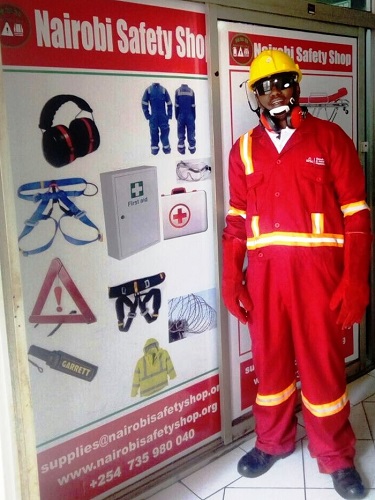Church safety is essential for ensuring a secure and welcoming environment for worshippers and staff. As Ambassador Steve Mbugua, the globally recognized Ambassador of Safety, I am dedicated to enhancing safety protocols within places of worship. In this article, we explore key strategies for church safety, including emergency preparedness, security measures, crowd management, and safeguarding vulnerable populations. By prioritizing church safety, we can create a peaceful and secure atmosphere where congregants can focus on their spiritual growth without concern. Let us delve into the critical components of effective church safety management and work together to build safer worship spaces for everyone.
Church safety involves the proactive measures, policies, and practices designed to ensure the physical, emotional, and spiritual well-being of congregants, staff, and visitors within a church environment. It encompasses a wide range of considerations, from emergency preparedness to pastoral care and facility management. Here’s a detailed exploration of church safety:
Introduction to Church Safety
Church safety is about creating a secure environment where worship, fellowship, and community activities can take place without compromising the safety of individuals. It includes preventive measures, training programs, and response protocols to address various threats and emergencies that may arise in a religious setting.
Different Accidents, Incidents, Illnesses, and Near Misses Relating to Church Safety
1. Slips, Trips, and Falls: Common accidents due to uneven flooring, inadequate lighting, or cluttered walkways.
2. Medical Emergencies: Sudden illnesses, heart attacks, or injuries during church services or events.
3. Fire Hazards: Risks related to candles, heating systems, electrical malfunctions, or kitchen facilities.
4. Weather-related Incidents: Storms, floods, or extreme temperatures affecting church buildings or outdoor activities.
5. Security Threats: Intrusions, thefts, vandalism, or violence targeting the church premises or attendees.
6. Child Safety Concerns: Supervision lapses, accidents during activities, or unauthorized access to children’s areas.
7. Transportation Incidents: Accidents involving church vehicles or transportation for events.
8. Foodborne Illnesses: Contamination or mishandling of food during church meals or events.
9. Psychological Emergencies: Mental health crises, emotional distress, or conflicts requiring intervention.
10. Structural Failures: Building collapses, roof leaks, or other infrastructure issues endangering safety.
11. Technology-related Issues: Data breaches, cybersecurity threats, or digital privacy concerns.
12. Natural Disasters: Earthquakes, hurricanes, or wildfires impacting church facilities and attendees.
Latest Trends in Church Safety
1. Security Systems Integration: Use of surveillance cameras, access control systems, and panic alarms.
2. Emergency Preparedness Drills: Regular practice of evacuation, lockdown, and shelter procedures.
3. Medical Response Training: First aid, CPR, and AED certification for church staff and volunteers.
4. Child Protection Policies: Background checks, training programs, and supervision guidelines for children’s ministries.
5. Active Shooter Preparedness: Training sessions, security assessments, and response protocols for violent incidents.
6. Health and Wellness Programs: Mental health resources, counseling services, and support groups for congregants.
7. Fire Safety Measures: Inspections, fire drills, and installation of fire suppression equipment.
8. Environmental Sustainability: Energy-efficient practices, waste management, and eco-friendly initiatives.
9. Community Engagement: Partnerships with local law enforcement, emergency services, and neighboring organizations.
10. Crisis Communication Strategies: Clear communication channels, emergency notifications, and updates for congregants.
11. Facility Upgrades: Renovations, maintenance, and accessibility improvements to enhance safety.
12. Training in Cultural Sensitivity: Understanding and respecting diverse backgrounds and needs within the congregation.
Church Safety Audits and Inspections
1. Facility Assessments: Evaluating building structures, grounds, and safety features for compliance and hazards.
2. Security Audits: Reviewing security policies, emergency response plans, and access control measures.
3. Health and Safety Checks: Inspecting worship areas, classrooms, kitchens, and outdoor spaces for safety risks.
4. Fire Safety Inspections: Compliance with fire codes, alarm systems, extinguisher maintenance, and evacuation routes.
5. Emergency Drills and Simulations: Testing responses to fires, medical emergencies, lockdowns, and natural disasters.
6. Food Service Inspections: Ensuring hygiene practices, food storage, and preparation meet health standards.
7. Transportation Safety Reviews: Assessing church vehicles, driver qualifications, and travel safety protocols.
8. Digital Safety Audits: Protecting digital data, online transactions, and privacy of congregants.
9. Environmental Health Assessments: Air quality, pest control, and hazardous material management.
10. Accessibility Evaluations: Ensuring facilities accommodate individuals with disabilities and elderly congregants.
11. Compliance with Legal Requirements: Adhering to local building codes, zoning regulations, and safety statutes.
12. Risk Assessments for Events: Analyzing risks associated with large gatherings, concerts, or special programs.
Church Safety Training Programs
1. Emergency Response Training: Educating staff and volunteers on procedures for evacuations, medical emergencies, and crisis management.
2. Security Awareness Programs: Training ushers, greeters, and security teams to identify suspicious activities and respond appropriately.
3. Medical Response Certification: First aid, CPR, and AED training for designated responders within the church community.
4. Child Protection Workshops: Teaching volunteers and staff about signs of abuse, reporting procedures, and child supervision guidelines.
5. Fire Safety Education: Fire prevention, evacuation drills, and proper use of fire extinguishers for all church members.
6. Technology Safety: Cybersecurity best practices, protecting personal data, and digital citizenship education.
7. Safety Leadership Development: Equipping church leaders with skills to promote and enforce safety protocols.
8. Conflict Resolution Training: Strategies for de-escalating conflicts and fostering a respectful environment.
9. Weather Preparedness: Procedures for severe weather alerts, sheltering, and outdoor event safety.
10. Elderly and Disability Sensitivity: Training on accommodating elderly congregants and those with disabilities during services and events.
11. Cultural Competency: Understanding diverse backgrounds and customs within the congregation to enhance inclusivity and safety.
12. Safe Driving Practices: Training drivers for church vehicles on road safety, defensive driving, and vehicle maintenance.
Church Safety Installations and Practices
1. Security Systems: Installation of surveillance cameras, access control systems, and panic buttons in strategic locations.
2. Emergency Communication Systems: Alert systems, emergency phones, and mass notification tools for rapid communication during crises.
3. Physical Barriers: Bollards, gates, and fences to control access and enhance perimeter security.
4. Lighting and Visibility: Adequate lighting in parking lots, walkways, and building entrances to deter crime and prevent accidents.
5. Fire Safety Equipment: Automatic fire detection systems, smoke alarms, sprinklers, and fire extinguishers placed according to fire code requirements.
6. Medical Response Stations: AEDs, first aid kits, and emergency medical supplies readily accessible throughout the church premises.
7. Childcare Facilities: Secure areas with age-appropriate equipment, childproofing measures, and clear visibility for supervision.
8. Environmental Safety Measures: Proper ventilation, pest control, and maintenance of indoor air quality.
9. Accessibility Improvements: Ramps, elevators, designated parking, and assistive devices to accommodate individuals with disabilities.
10. Facility Maintenance: Regular inspections, repairs, and upkeep of facilities to prevent hazards and ensure structural integrity.
11. Data Protection: Cybersecurity measures, encryption of sensitive data, and policies to safeguard digital information.
12. Event Safety Plans: Detailed plans for security, medical support, crowd control, and emergency responses during church events.
Church safety is a multifaceted endeavor that requires ongoing attention, collaboration, and commitment from church leaders, staff, volunteers, and congregants. By prioritizing prevention, preparedness, and proactive measures, churches can create a safe and nurturing environment where individuals can worship, learn, and grow together in faith. Continuous training, regular assessments, community engagement, and compliance with safety regulations are essential for maintaining a culture of safety that supports spiritual growth and community well-being.
In conclusion, church safety is a vital aspect of maintaining a secure and supportive environment for all attendees. As the Ambassador of Safety, I have highlighted the importance of implementing robust safety measures, including emergency planning, security protocols, and protective practices for vulnerable groups. By embracing these strategies, churches can protect their congregants, staff, and visitors, ensuring a safe and serene place for worship and community gatherings. Let us commit to advancing church safety and work collaboratively to create worship spaces where everyone feels secure and valued. Prioritizing these practices not only enhances the safety of our churches but also supports the overall well-being and peace of our faith communities.
READ MORE
Church Safety Video
Largest Church Safety Equipment Shop
Conducting Church Safety Workshops
BUILDING A CULTURE OF SAFETY



















